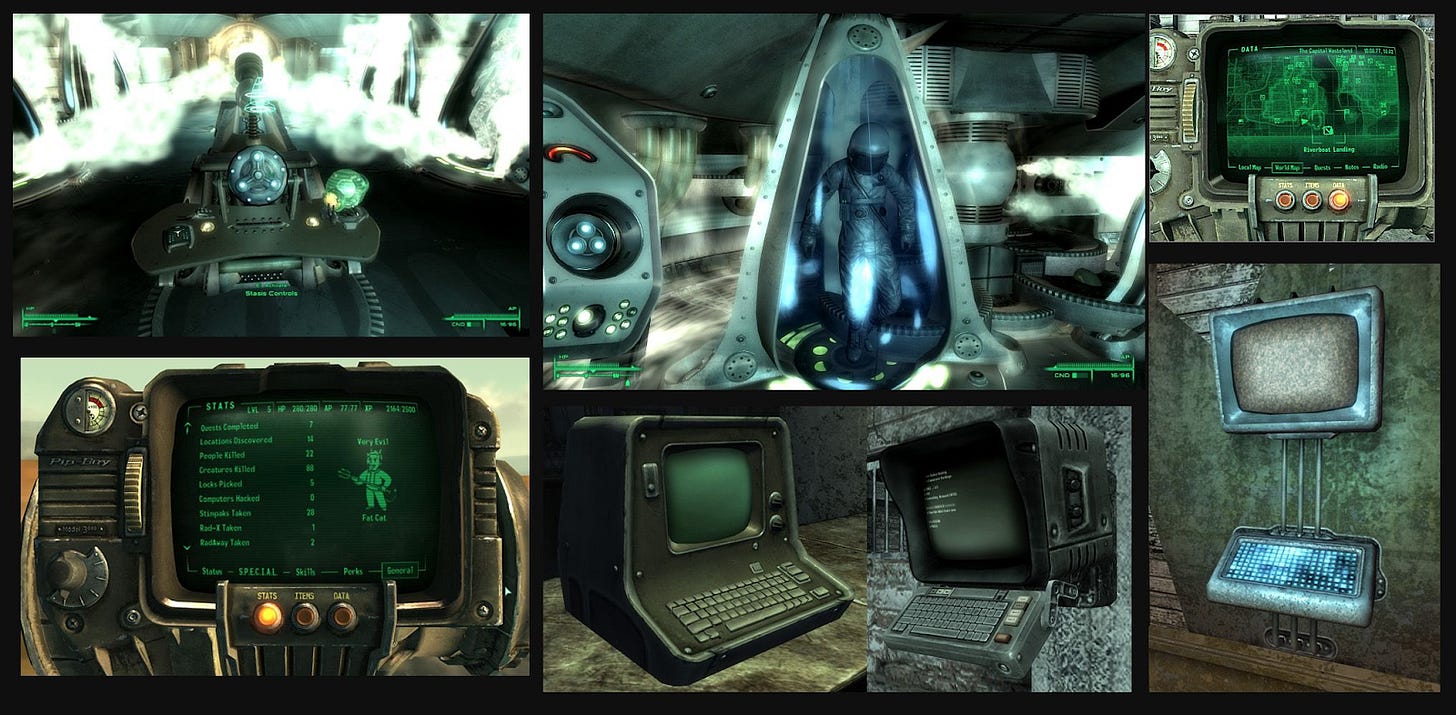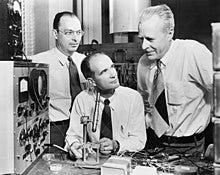People often say that data is the new oil. If that’s true, then microchips are the new steel.
Data is the fuel that powers the digital revolution, while microchips are the hard backbone that enables it.
Chips underpin almost every aspect of our modern lives. And yet, we rarely give them a second thought. Computers, the internet, our phones, cars, and TV’s. They all just work.
But hidden inside all these devices are the components that make them go. And hidden behind those components, are the companies that make them a reality.
The story of the microchip is varied and fascinating. So in an effort to give a just-the-facts summary, here is everything you need to know about one of the most important pieces of technology that makes the modern world possible.
The Transistor
When we talk about chips, we have to start with transistors.
Transistors, at their heart, are logic gates. Yes or no. On or off. 1 or 0. It gets more complicated, but that’s the gist.
They typically consist of three layers of a semi-conductive material.
What is a semi-conductive material?
By conductive we mean: allowing heat or electricity to travel through it.
Copper is very conductive, which is why its an excellent wire or circuit.
Rubber is not very conductive, which is why its a good insulator.
Silicon is kind of conductive, which is why its a perfect semi-conductor. It can allow or stop the charge, depending on whether you want to signal a 1 or 0.
A transistor is usually three layers of a semi-conductive material, organized by three terminals.
These terminals are known as:
The Emitter: (negative lead) emits electrons
The Base: (the terminal that activates the transistor) is thin and lightly doped to pass electrons to the collector
The Collector: (positive lead) collects the electrons
Transistors revolutionized the world since their invention at Bell Labs in 1947. It allowed us to go from analog vacuum tube products, to digitally enabled transistor products, which fueled the trend of STEM compression.
Transistors are used in a wide range of applications, from simple electric switches, to complex circuits in telecom systems, to microprocessors and memory storage devices.
They’re the reason we live in a digital world, rather than a diesel punk one like the Fallout series.
The transistor was invented by John Bardeen and Walter Brattain, at Bell Labs in 1947, with their manager, William Shockley, adding his name to the invention by innovating on it slightly, not wanting to be outdone.
Shockley didn’t play nice in the sandbox with others, so in 1955, he left Bell Labs for California, both to be near his ailing mother, and to be far away from the colleagues he’d developed bad blood with.
In a similar way that Hollywood was created, Shockley moved west to be as far away from the East Coast power structures as he could. He was also lured by Stanford's then provost, Fred Terman, who believed that a solid research institution in the area would benefit Stanford.
Shockley settled in Palo Alto and recruited some of the best talent that was graduating all over the country. Among those he recruited were Robert Noyce, Gordon Moore, and Eugene Kleiner.
But despite his efforts to distance himself from his past colleagues, Shockley’s own cantankerous nature was not something he could run away from.
Many of his new hires left Shockley Semiconductor to form their own rival company. The “traitorous eight” as they would be called, went on to form Fairchild Semiconductor, a division of Fairchild Camera and Instrument.
Fairchild was funded by Arthur Rock, one of the first Silicon Valley venture capitalists, who would go on to eventually bankroll Teledyne, Intel, and Apple.
In an interesting twist of fate, Robert Noyce and Jack Kilby would create the integrated circuit (microchip), independent of one another. Noyce at Fairchild Semiconductor and Kilby at Texas Instruments, in 1958 and 1959, respectively.
Rather than getting lost in a protracted legal dispute (although there was some of that), they agreed to co-license the technology, agreeing on shared inventor credit, despite the fact they’d never worked together directly.
The Microchip / Integrated Circuit
A transistor is a single electronic component that can amplify electronic signals and electrical power. As discussed, it’s essentially a switch. 0 or 1.
An integrated circuit (IC), also known as a chip or microchip, is a semiconductor device that combines multiple transistors and other electronic components onto a single piece of semiconductor material, typically silicon.
A modern chip can have hundreds and now thousands of transistors on it.
Noyce and Moore eventually got frustrated with the management and bureaucracy of Fairchild and left to form Intel, bankrolled once again, by Arthur Rock.
Other chip companies began to spring up to service this new market as well.
Advanced Micro Devices (AMD 1969), established by Jerry Sanders in 1969, has become a significant player in the CPU and GPU markets.
Arm (1978) gained prominence in the 1980s with its RISC-based processor designs, which have become widely used in a variety of devices.
Most of these companies were vertically integrated, creating their own chip designs as well as fabricating the chips themselves. But this began to change in the 1990s.
TSMC
TSMC, or Taiwan Semiconductor Manufacturing Company, was founded in 1987. It was the first company to create a semiconductor Dedicated IC Foundry business model, which focuses on providing contract manufacturing services for semiconductor companies.
TSMC's origins can be traced back to a joint venture between the Taiwanese government and Philips, with the goal of developing Taiwan's semiconductor industry.
The company received significant investment and support from the Taiwanese government and other strategic partners, which helped establish itself as a major player in the semiconductor foundry market.
TSMC's early focus on advanced process technologies and its ability to attract leading semiconductor companies as customers, contributed to its rapid growth and emergence as a key player in the global semiconductor industry.
They now control more than half of the world market for made-to-order chips and have almost 90 percent of the market for the most advanced nodes currently in production.
Competitors Include:
Samsung: Headquartered in Seoul, South Korea, is TSMC's closest competitor in terms of market share in the foundry business.
GlobalFoundries: Based in Malta, New York.
Intel: While primarily known for its design and manufacturing of microprocessors, Intel has also expanded its foundry services.
TSMC is unlikely to be unseated anytime soon because:
ASML, a Dutch company based in Veldhoven, the Netherlands, is the only company in the world that currently manufactures extreme ultraviolet (EUV) lithography machines, which are essential for producing the most advanced semiconductor chips. The cost of one of ASML's most advanced EUV lithography machines is more than $100 million.
Given the complexity and demand for these advanced machines, coupled with ASML's strong backlog of orders valued at €38 billion, the wait time is several years to get a new machine.
Why do we care?
TSCM is a foundry, meaning that companies will send it advanced CPU and GPU chip designs, and through the complex and dangerous process of ultraviolet lithography, they will actually create the integrated circuits which go into phones, computers, cars, planes, and consumer devices.
Quite literally, almost every digital device we use today, has chips that were fabricated in Taiwan.
To make matters worse, Taiwan is more or less as close to China, as Cuba is to the US. And China actually claims Taiwan as their sovereign territory.
The US is currently restricting China from using the most advanced GPU’s to power their own AI research and integration. If China were to annex Taiwan by force (see my recent article as to why they would do that), they could restrict global chip production to the US and its Allies.
Currently, Intel, Samsung and Sam Altman are working on solutions to create alternatives to chip fabrication outside of Taiwan.
But NVIDIA, which is now the fourth most profitable company in the world (surpassing Google), far and away the most advanced chip designer, and the market leader for GPU’s, says it will take ten years to break its chip dependency on TSMC, (as of November 2023).
Former presidential candidate Vivek Ramaswamy identified this as a key issue, and the Biden Administration has been active with several chips acts to try to assuage this problem.
Microchips are the quiet, unsung heroes of the digital age (much like the offensive linemen on any football team). Their production will continue to be pivotal to how we live our lives, and what the future will look like.









This is a great read! It answers several questions I had about GPU production. Thanks for digging into the details for me!
How true is that news that the U.S. recently found a great stash of rare earth metals? In Wyoming apparently?